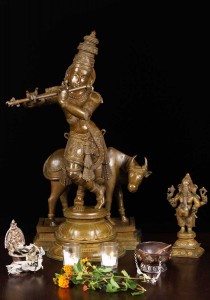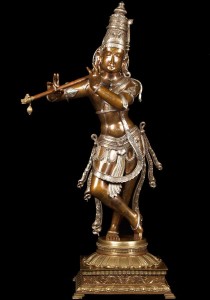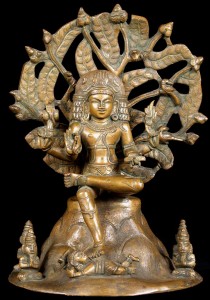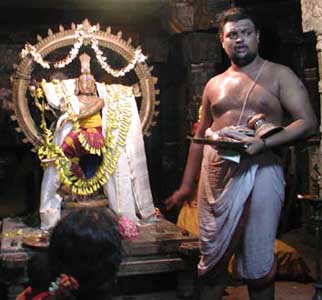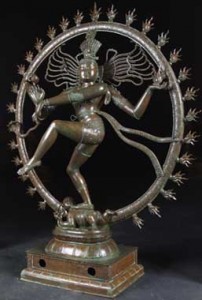“Lord Vishnu said that the merit acquired in this month through good deeds, charity and austerities is equal to such acts performed in all the 12 months of the year.”
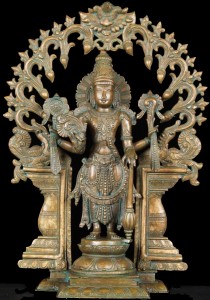
The Hindu calendar is a lunar calendar, based on the cycles of the moon. A lunar month is approximately 29.5 days long, compared to a solar calendar, which is a 30 to 31 day cycle. An extra month, or AdhikMahina, is added to the Hindu calendar every 2.5 years to match a solar calendar. In 2012, Purushottam month will be held on August 18 – September 16.
This extra month is dedicated to Hindu God Lord Vishnu, the Preserver of the World and Upholder of the Dharma (moral order). It is believed that worshipping Lord Vishnu and to the Krishna Avatar of Vishnu is highly meritorious and praiseworthy at this time. Lord Vishnu is known chiefly through his incarnations, particularly Rama, Krishna and Buddha. His preserving, restoring, and protecting powers have been manifested in the world in a series of ten earthly avatars, which either help prevent a great evil or to affect good upon the earth. Lord Vishnu ensures peace and order on earth and preaches love, honesty and a staunch belief in principles of morality.
Lord Krishna was the 8th Avatar of Lord Vishnu and popularized as the youthful hero in the Bhagavad Gita. In the epic poem, Krishna persuades Prince Arjuna on the eve of the great battle of Kurukshetra to fight by instructing him in spiritual wisdom and the means of attaining union with God. Lord Krishna promoted religion, philosophy, love and art forms, such as literature, painting, and sculpture.
There is a particular Hindu God assigned to every month in a traditional calendar year. Initially, the extra lunar month carried a stigma and was not assigned to a particular Hindu God. Lord Vishnu took pity on this occasion and assigned it to him and especially to Lord Krishna. Lord Vishnu said that the merit acquired in this month through good deeds, charity and austerities is equal to such acts performed in all the 12 months of the year. Purushottam has since acquired greater significance than any other lunar cycle.

